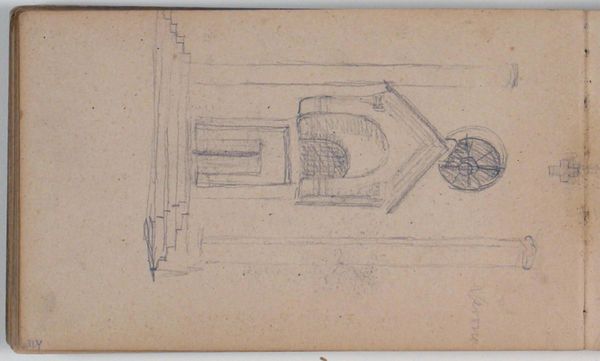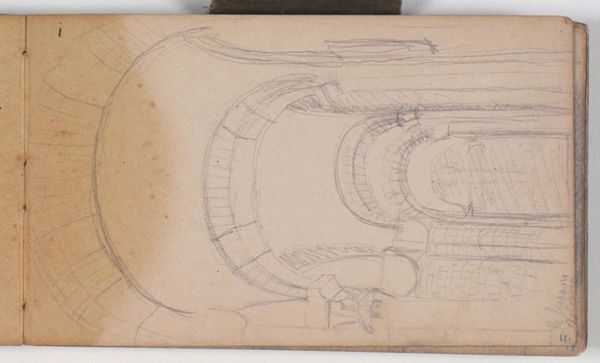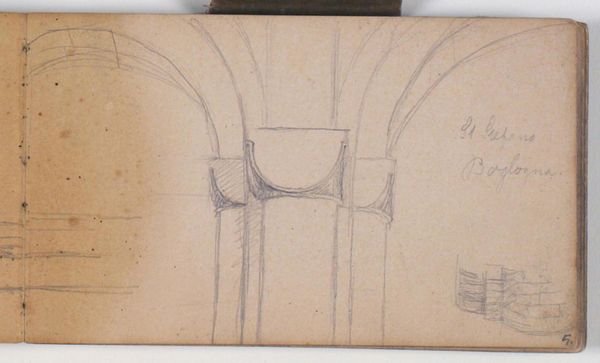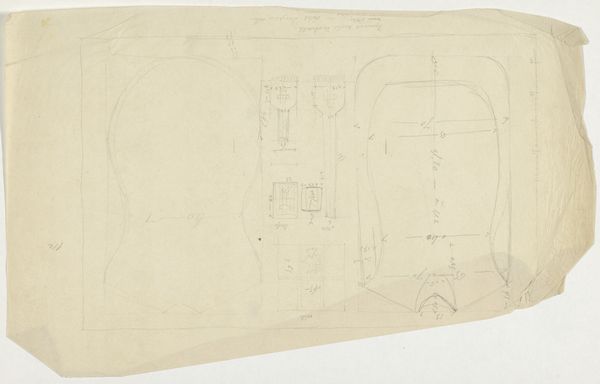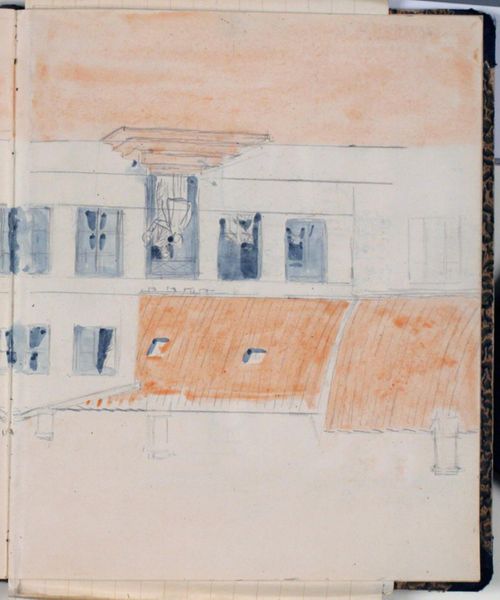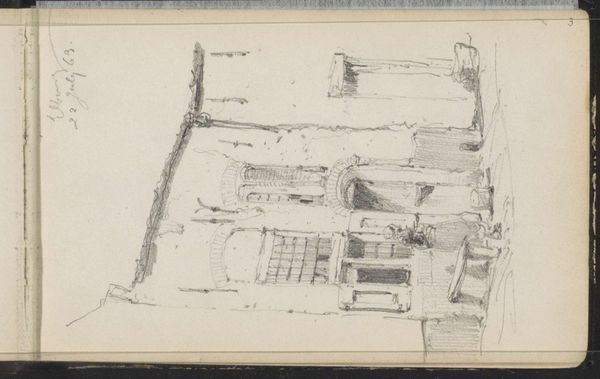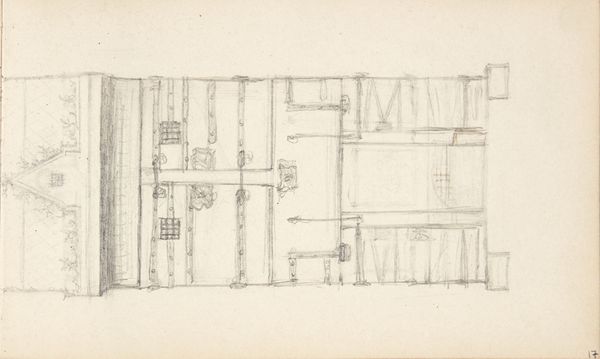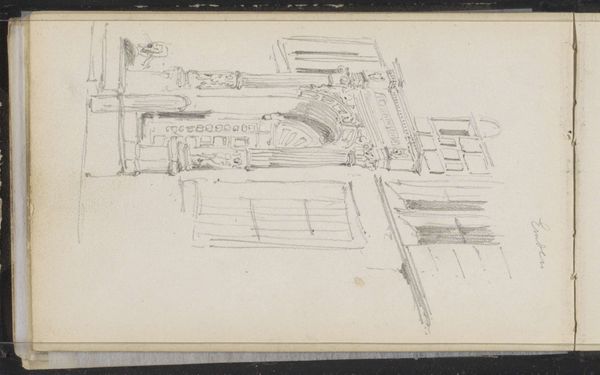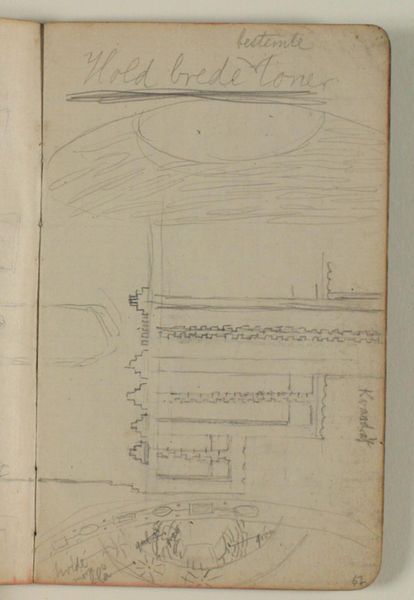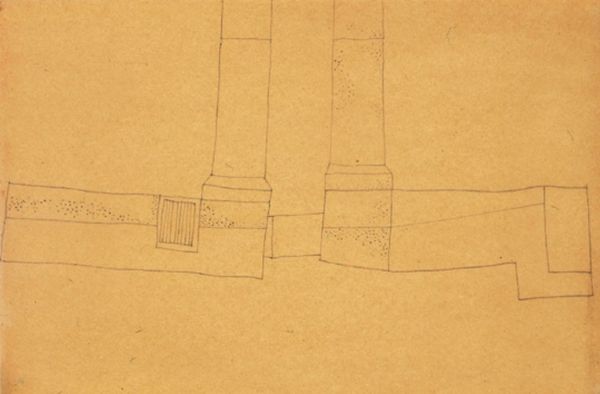
drawing, pencil, architecture
#
drawing
#
landscape
#
pencil
#
architecture
#
realism
Dimensions: 101 mm (height) x 168 mm (width) (bladmaal)
Curator: Editor: Here we have Niels Larsen Stevns’s “Indgangsparti fra Domkirken i Lucca,” created in 1896, a pencil drawing depicting an architectural facade. It seems quite sparse, almost skeletal in its rendering. What captures your attention in this piece? Curator: As a materialist, I immediately consider the labour embedded in this drawing. Look at the very visible pencil strokes and the conscious construction of lines. Stevns isn't just representing the cathedral; he is actively *making* an image through deliberate actions. Does the repeated motif of arches hint at mass production within the field of architectural design at the time? What purpose did this kind of drawing serve - could it be used to transfer patterns from one architect or builder to another? Editor: I see your point about labor, but the lines are so light and airy that I'd hardly associate it with any grueling work. Maybe the intention here was just to plan a trip to the Cathedral - the inscription in the bottom-left corner could serve as the name of a street or a quick note, like the artist wants to remember the street it's on... Do the light marks influence the impression of craftsmanship versus industrial output that you're getting from the work? Curator: That's an insightful counterpoint. The lightness, as you call it, speaks to the accessibility of the material, of the relatively simple pencil and paper. Yet the meticulous nature of the architectural forms can't be ignored, and the presence of text, however ephemeral, situates this drawing in a larger system of production and consumption. Are these arches specifically ornamental? How do they dictate movement within a city, or through a doorway? We cannot just read their beauty; we must look to the social systems around it. Editor: I never thought about arches having a function beyond decoration... thinking of them in that context, it reframes the drawing! Curator: Exactly! Art doesn't exist in a vacuum; the physical reality, like the application of graphite to paper, and social conditions around art contribute profoundly to its meaning and resonance.
Comments
No comments
Be the first to comment and join the conversation on the ultimate creative platform.
